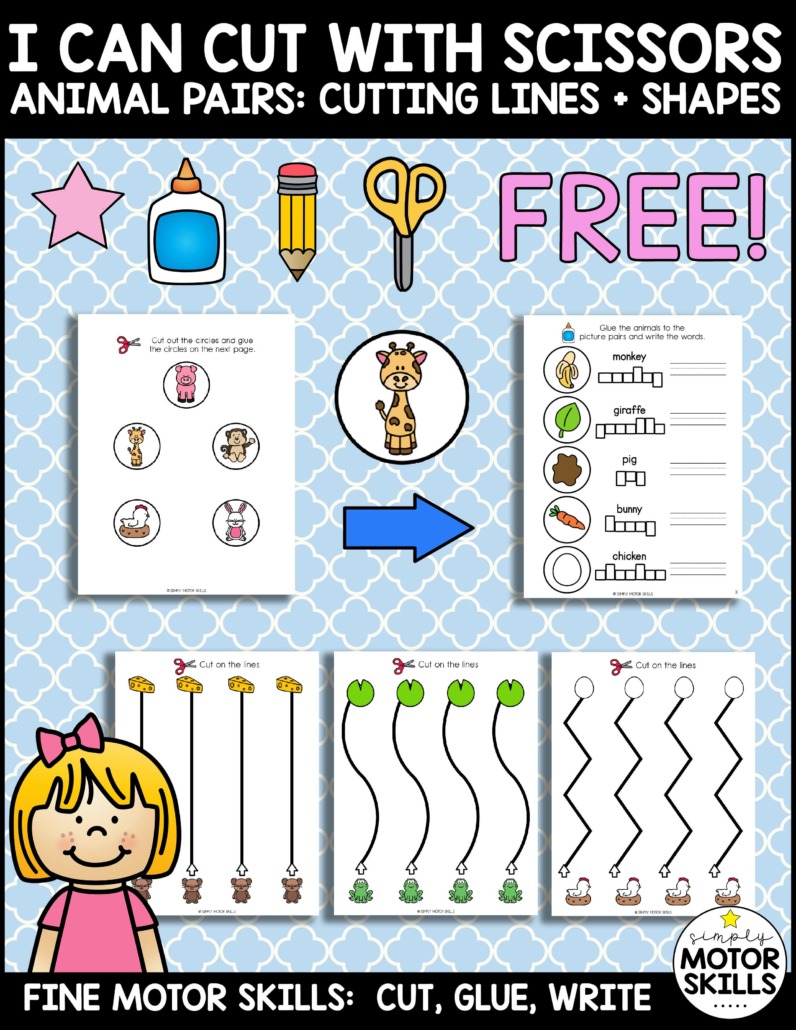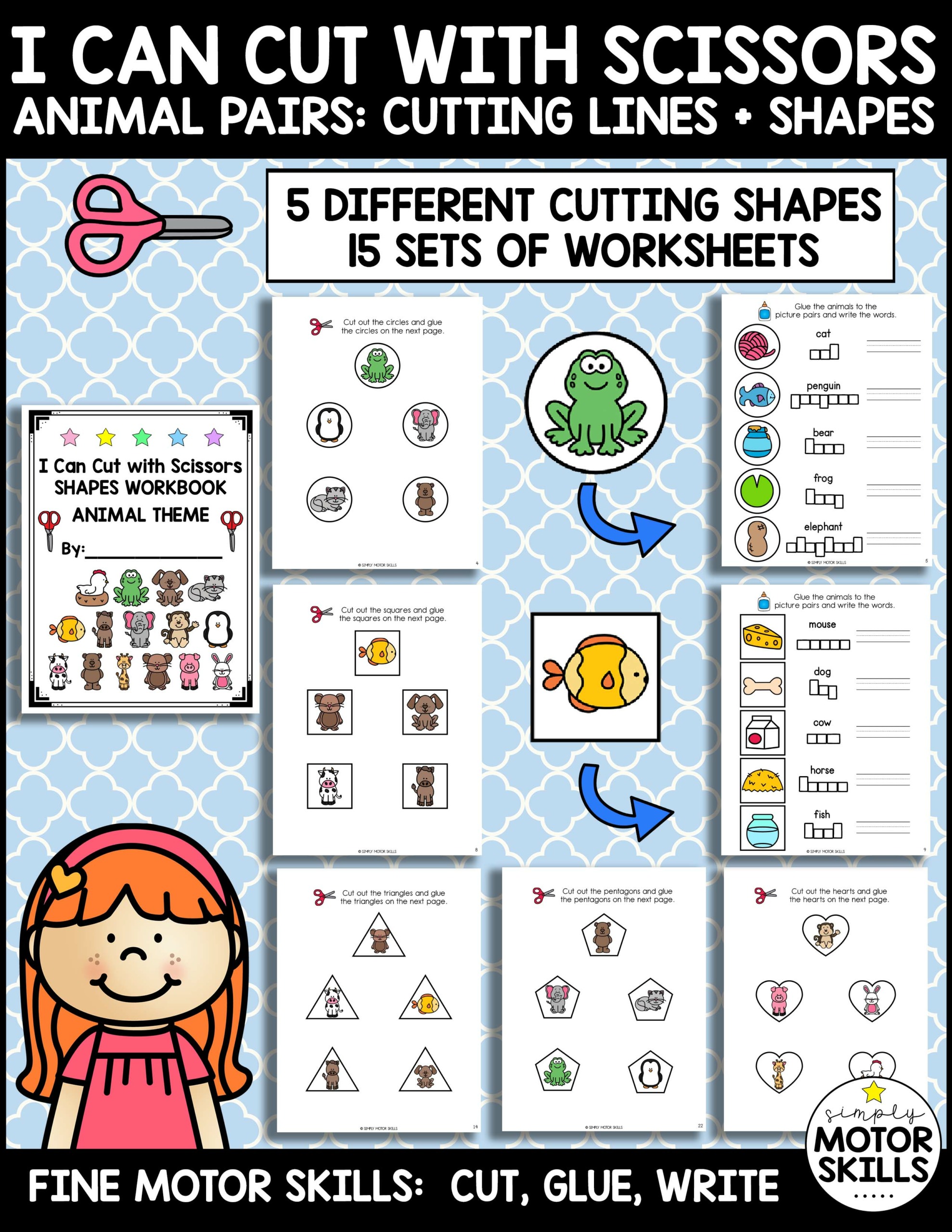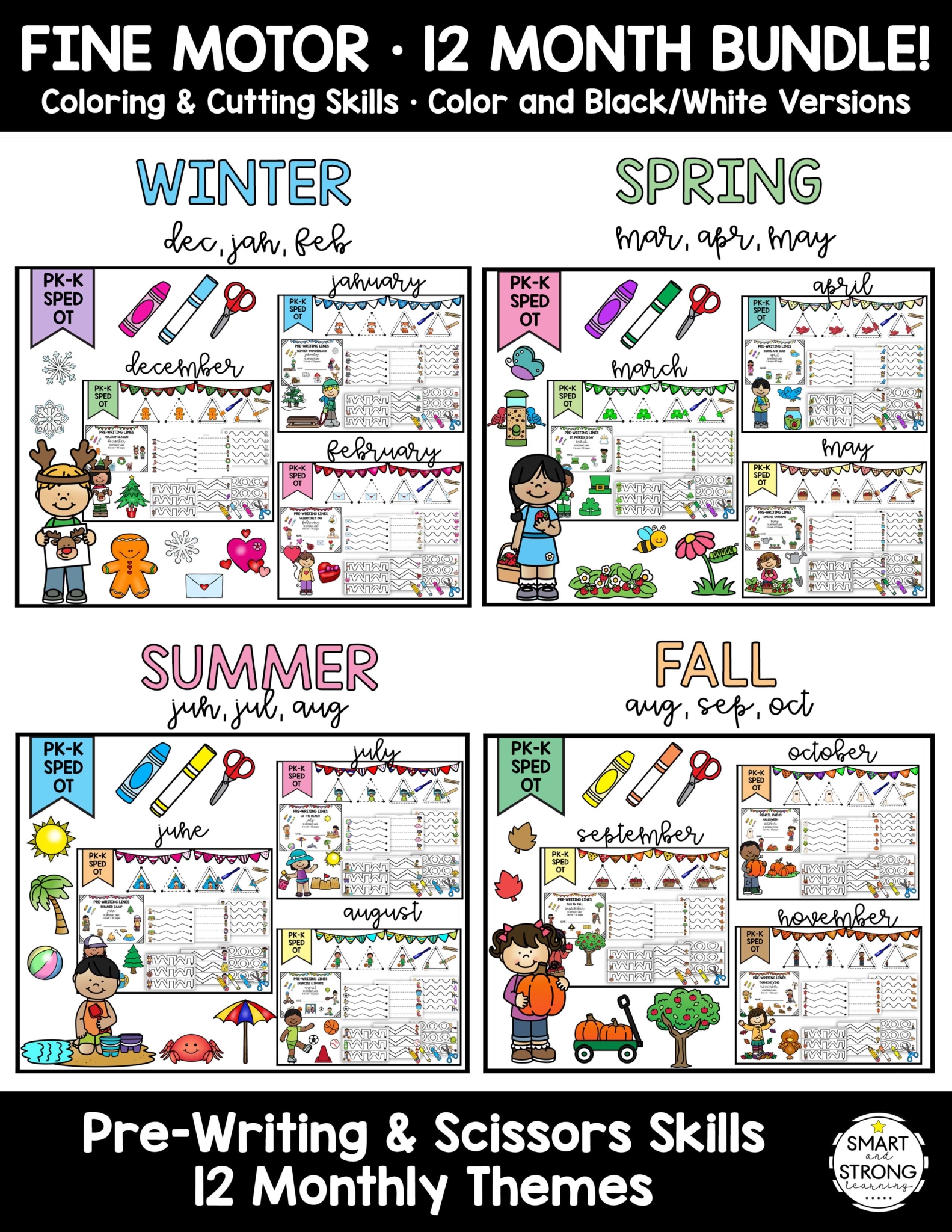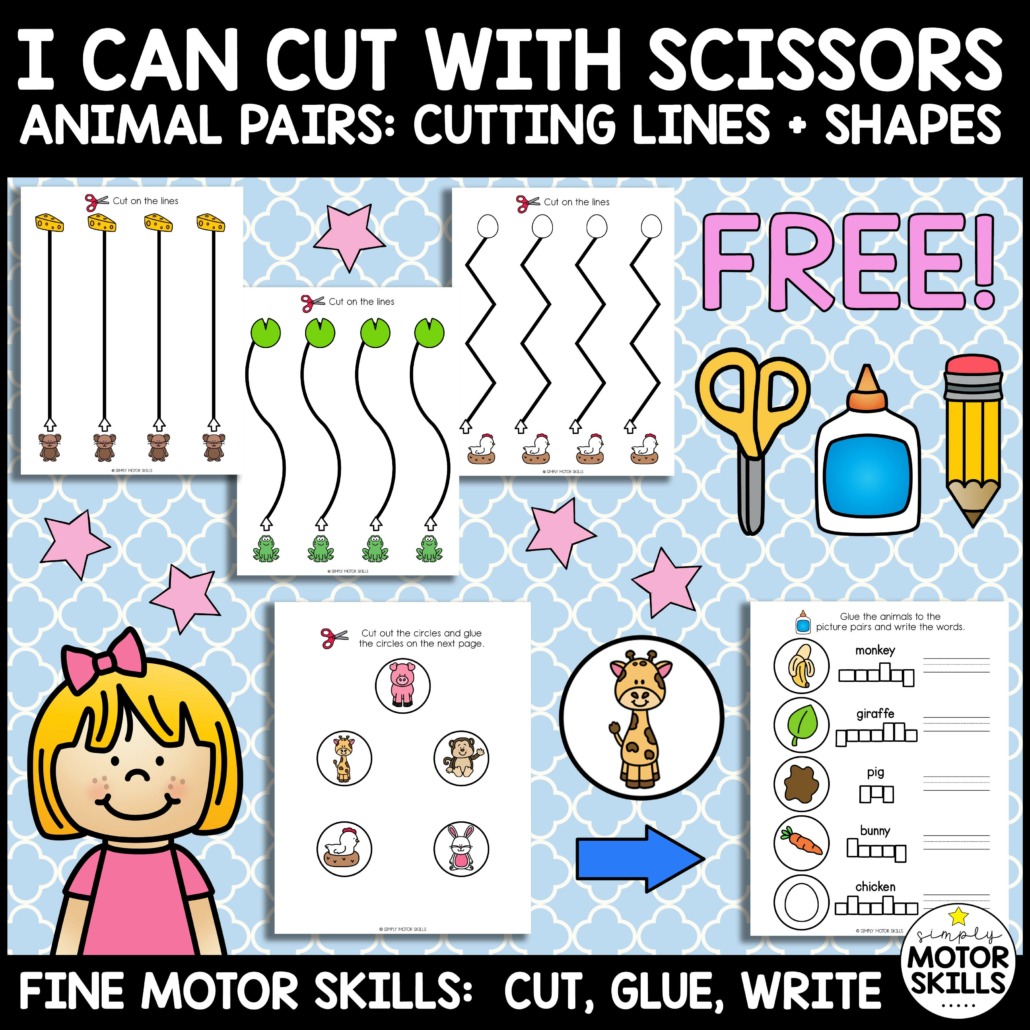Cutting Activities for Kids – Free Printable Packet

Cutting activities for kids are a great way to help young children develop their fine motor skills, hand-eye coordination, and bilateral coordination. Giving a child a pair of scissors might seem intimidating at first, but with lots of practice and fun activities, little learners can become proficient in using them. Get the free printable cutting activities for kids with an animal theme at the bottom of this blog post. Learn the answers to some common questions about cutting activities and skills development too!
You can download a FREE Animal Themed Cutting Activities for Kids PDF at the bottom of this blogpost.
Free Printable Cutting Activities for Kids with an Animal Theme
One of the easiest ways to introduce cutting skills to young kids is by using free printable activities that feature simple shapes and fun themes, like animals. This freebie packet is from the complete Animal Cutting Lines and Shapes Packet.
Kids can practice cutting out these lines and shapes using scissors, designed for little hands and providing a safer cutting experience. As they gain confidence and improve their cutting skills, you can introduce more complex shapes and designs for them to cut out.

Animal Cutting Lines and Shapes
How Do You Make Cutting Fun for Kids?
There are many ways to make cutting activities fun for young children, and the key is to keep them engaged and excited about the task. Here are some fun ideas to try:
- Sensory bin: Create a sensory bin filled with small pieces of paper or strips of paper for your child to practice cutting. They can use plastic scissors to make small snips; the sensory experience will keep them entertained.
- Paper plate animals: Use paper plates as the base for creating animal faces. Draw or print simple shapes for your child to cut out and glue onto the paper plates to make their own animal creations.
- Play dough: Cutting play dough is a fun way to help develop hand strength and hand-eye coordination. Provide your child with blunt-edged scissors or plastic scissors to practice cutting the play dough into different shapes.
- Junk mail: Recycling bin overflow? Put it to good use by letting your child practice cutting skills on old magazines, store ads, or junk mail. They’ll have so much fun, they won’t even realize they’re practicing an important skill!
How Can I Improve a Child’s Cutting Skills?
Improving a child’s cutting skills takes time, patience, and lots of practice. Here are some tips to help your child or student improve:
- Start with simple shapes: Begin with thick straight lines, then gradually move on to more complex shapes as your child becomes more confident in their cutting abilities.
- Smiley face thumbnail trick: Teach your child to hold the scissors with their thumb in the small hole and their other fingers in the larger hole, using the “smiley face thumbnail” trick, where their thumbnail should be facing up and visible like a smiley face.
- Right scissors: Make sure your child is using the right scissors for their age and skill level. Blunt-edged scissors or plastic scissors are great for beginners, while older kids might need sharp scissors to cut through thicker materials. If the student is left handed make sure you are using left hand scissors.
- Direct supervision: Always supervise your child while they are using scissors to ensure their safety and provide guidance if needed.

Scissor Skills Printable Worksheets
What do Children Learn from Using Scissors?
Cutting activities offer numerous benefits for young children and older students as well, including:
- Fine motor skills development: Cutting requires the use of small hand muscles, which helps develop fine motor strength and dexterity.
- Hand-eye coordination: As children cut along lines or shapes, they must coordinate the movements of their hands and eyes.
- Bilateral coordination: Cutting activities require the use of both hands, which helps children develop the ability to coordinate movements between their dominant and non-dominant hands.
- Focus and concentration: Cutting activities require children to pay attention to the task at hand, helping them develop their focus and concentration skills.
- Creativity and self-expression: As children create their own shapes and designs through cutting activities, they have the opportunity to explore their creativity and express themselves.
- Confidence and independence: As children master cutting skills, they gain a sense of accomplishment and independence in completing tasks on their own.
What Fine Motor Activities Help with Cutting?
In addition to cutting activities, several other fine motor activities can help improve your child’s cutting skills by strengthening their hand muscles and coordination. Some of these activities include:
- Play dough manipulation: Encourage your child to squeeze, pinch, roll, and flatten play dough, as this helps develop hand strength and dexterity.
- Stringing beads or pasta: Threading beads or pasta onto a string helps develop hand-eye coordination and fine motor control.
- Using tongs or tweezers: Have your child use tongs or tweezers to pick up small objects, like pompoms or cotton balls, and transfer them to another container.
- Tracing and coloring: Encourage your child to trace shapes or color within lines, which helps improve their hand-eye coordination and fine motor control.
- Hole punching: Provide kids with a hole punch and let them practice punching holes in paper or cardboard.

Prewriting and Scissor Skills 12 Month Bundle
Download your FREE Cutting Activities for Kids PDF Packet Here
Cutting activities for kids are a fun and engaging way to help young children develop their fine motor skills, hand-eye coordination, and bilateral coordination. With various free printable activities, such as those featuring an animal theme, and plenty of practice, little learners can become proficient in using scissors and gain confidence in their abilities. Be sure to further incorporate other fine motor activities to support their cutting skills development and overall growth.



